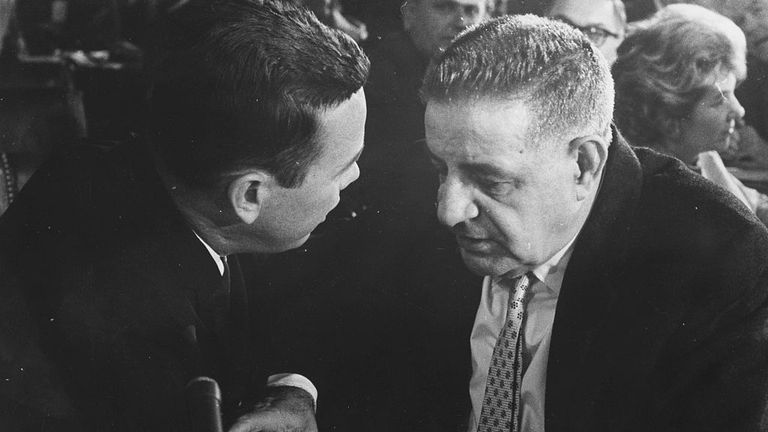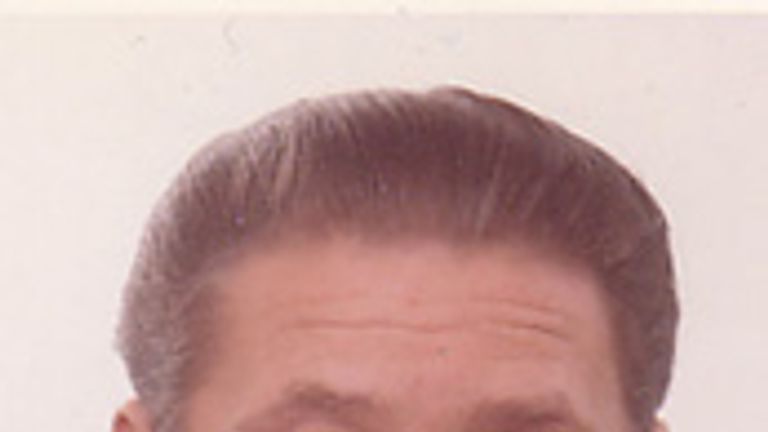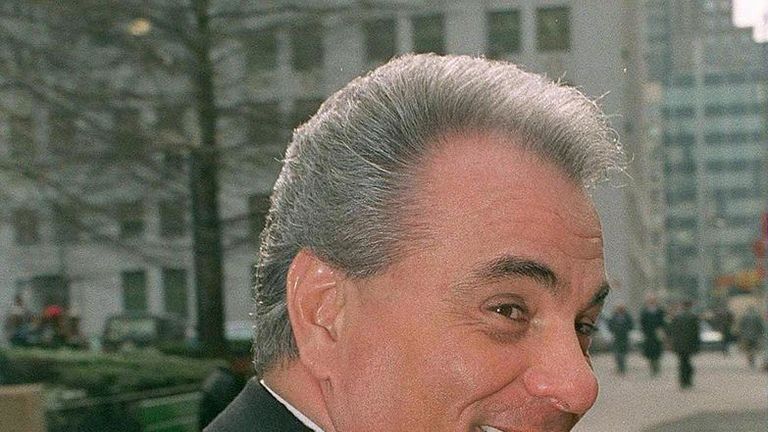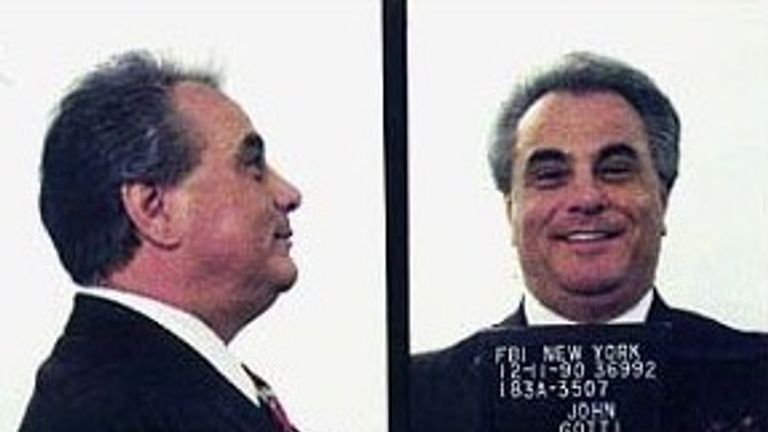In the early 1960s the United States was seen to be losing its war against organised crime.
Italian-American gangs avoided detection and prosecution through enforcing "omerta" – a code of silence that was honoured by members to hide their activities from outsiders.
Mobsters who were questioned by police would refuse to break the code for fear of being murdered by the gang they had betrayed.
A young attorney named Gerald Shur, who joined the justice department's organised crime and racketeering section in 1961, quickly realised the silence would have to be broken for mob members to be convicted.
He went on to create the US witness protection programme, in a move that brought down some of the most powerful figures in the criminal underworld.
Advertisement
The programme offered a new life and identity to certain mobsters willing to testify, with the information they shared being used to convict fellow members who had committed greater crimes.
Its purpose remains much broader than that – it offers protection to anyone who could be killed if they give evidence.
More from United States
Mr Shur, now in his eighties and living in Philadelphia, told Sky News: "I had been speaking to the owner of a trucking company in the early 1960s.
"He was being extorted by a member of an organised crime gang.
"I told him he was the victim of a crime and we needed his testimony.
"He said, 'There's no way I'm doing that, I could be murdered'."

After conducting other interviews later that day, Mr Shur realised he had to find a way to ensure people facing such a threat could testify.
"And that was the beginning of the idea for the witness protection programme. That's when I began to think about it."
Mr Shur said it then became a matter of convincing the justice department to fund the scheme, as well as convincing all federal agencies to make use of it.
The first mobster to break omerta was Joseph Valachi, a "soldier" in the Genovese family in 1950s New York.
Valachi is remembered today for his testimony before a US senate committee in 1963, in which he revealed parts of the mob's structure, operations and rituals.
It was the first time the mafia's existence had been publicly confirmed by a member.
Mr Shur would not reveal the reason why Valachi became an informer, and the mobster's reasoning has been debated ever since.

Some believe he wanted to expose an organisation he had grown to loathe, while others suspect the move was part of a plea bargain after he was reportedly handed the death penalty for murder.
It is thought Valachi was handed a life sentence instead for agreeing to testify.
Mr Shur, who worked for the justice department until 1995, said: "It was Joe Valachi who told me that the name of the mob is not mafia, the name is cosa nostra.
"And so from thereon in we began to talk about the cosa nostra.
"The phrase translates roughly to 'our thing'."
Mr Shur's idea for the witness protection programme, which was formally established in 1970, was what led to scores of other cosa nostra members stepping forward in the decades that followed.
One of the most notorious protected witnesses was Salvatore "Sammy the Bull" Gravano, who "flipped" and helped bring down the head of the Gambino family John Gotti.
Gravano had once been a loyal underboss in the family, but along with other members is said to have become tired of Gotti's high profile and regular media appearances.

Relations deteriorated further when Gravano learned Gotti had badmouthed him on FBI wiretaps at their Little Italy headquarters, the Ravenite Social Club in New York.
"Sammy the Bull" agreed to testify against the Gambino boss in 1991 in a deal that involved him confessing to his involvement in 19 murders.
Gotti was sentenced to life in prison after being convicted of five murders and died behind bars in 2002.
Gravano entered the witness protection programme under the new name Jimmy Moran after being released early from prison in 1994.
He was relocated to Temple in Arizona, where he started a swimming pool installation company.
Despite the potential danger he faced by returning to his former life, Gravano decided to leave the witness protection programme in 1995.
He lived openly, giving interviews on national television and remains alive to this day.
Mr Shur said: "The vast majority of people stay in the programme, a few of them have gone public.
"I think primarily they go public because they want to satisfy their ego.

"Lots of these people would have been an important person in their home city, but now they're in a new city where they are just average people.
"And they have to adjust to that. Some can't."
All witnesses who enter the programme go to an unspecified location in Washington DC, where they are given a completely new name and backstory.
If they have families then their wives and children are also given new identities.
The witness has to sign an A4 document outlining the rules of living under protection, which prevent them for returning to their old home or contacting anyone from their past existence.
Those in the programme are not even allowed to attend the funerals of friends and family from their old life, or visit sick relatives in hospital.
Mr Shur said: "Because they are such places that would-be killers would loRead More – Source
[contf] [contfnew] 
Sky News
[contfnewc] [contfnewc]






